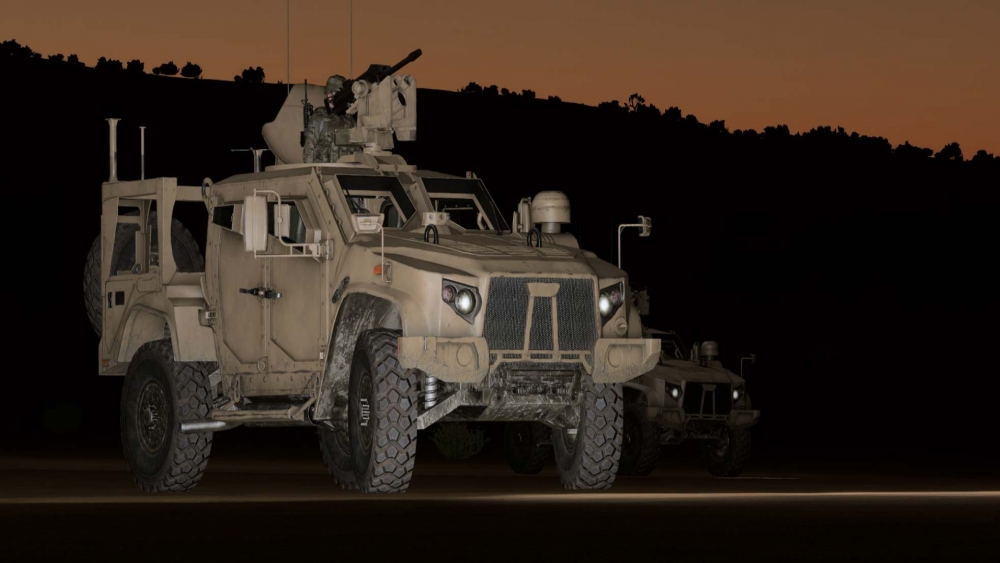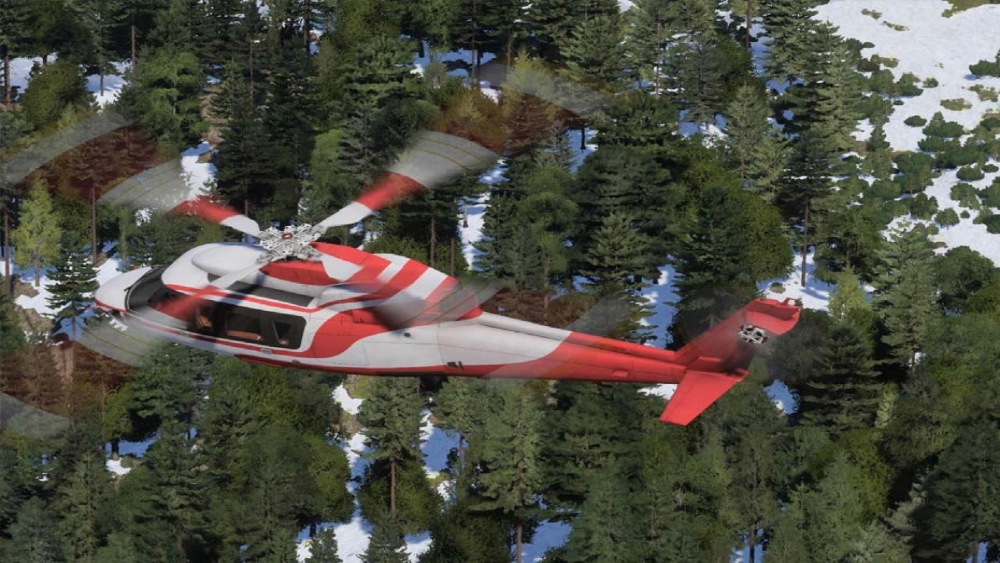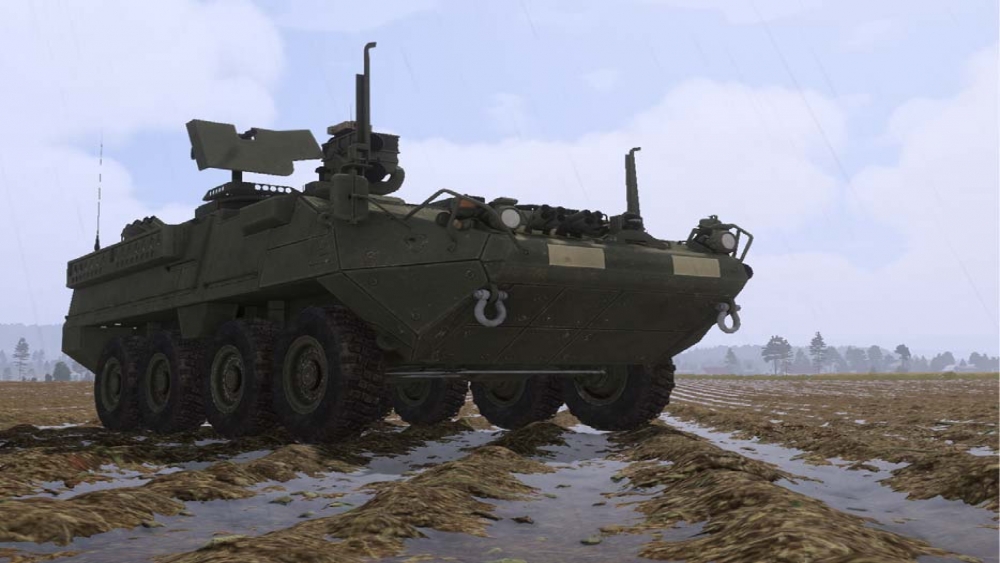Updates include a New Physics Engine for More Accurate Vehicle Behaviors, Improved Environmental Features for Deeper Trainee Immersion, and Better Workflows for Greater Flexibility in Networking Setups
ORLANDO, Fla. (USA) - The latest major software release of VBS4 from Bohemia Interactive Simulations (BISim) is available for customers to start training right now. VBS4 is an easy-to-use, whole-earth virtual and constructive simulation and can also function as a simulation host. From today, customers can download VBS4 21.1 via the BISim Customer Portal.
VBS4 delivers easy-to-use tools for trainers and simulation administrators, amazing graphical visuals to immerse soldiers in a realistic virtual training environment, and many more military training use cases than any other simulation software available.
VBS4 21.1 introduces powerful performance improvements and stunningly realistic environmental scenes for more immersive training environments anywhere in the world. These include
- an upgrade to NVIDIA’s PhysX 4 as VBS4’s new physics engine,
- new workflows offering greater flexibility in setting up network architectures,
- access to high-fidelity Microsoft Bi ng Maps global satellite imagery directly through the VBS4 launcher (requires a Microsoft Bing API key and a VBS4 license update),
- enhancements to environmental visuals like high-fidelity ship wakes, snow, surface moisture and 3D tree visualization with minimal performance impacts, and
- dozens of highly detailed, interactive 3D models of vehicles, characters, and equipment representing militaries and cultures from around the world.
“VBS4 delivers easy-to-use tools for trainers and simulation administrators, amazing graphical visuals to immerse soldiers in a realistic virtual training environment, and many more military training use cases than any other simulation software available,” said BISim CCO Pete Morrison.
New PhysX 4.0 Physics
The update to NVIDIA’s PhysX 4.0 in VBS4 brings a better driving experience and improved performance in larger-scale scenarios. With enhanced built-in wheel, tire and track simulation, VBS4 using PhysX 4.0 now enables users to simulate different tire types. In addition, the VBS4 gearbox simulation has also been updated to behave more reliably and realistically. Another major benefit with PhysX 4.0, users will experience much faster performance when large numbers of vehicles are in the same scenario. These benefits are present across the entire VBS4 vehicle content library.
Enhanced built-in wheel, tire and track simulation, VBS4 using PhysX 4.0 now enables users to simulate different tire types.
Workflow Improvements
VBS4 users will notice a new Training tab alongside the Battlespaces tab in 21.1. This tab provides a single-player Battlespace training option. Training administrators can create and distribute single-player training scenarios in networked environments.
VBS4 also provides more flexibility to training administrators in setting up their network architectures. The VBS World Server provides a dedicated server for local area networks. VBS4 also gives the option to use the VBS World Server to store terrains and Battlespaces as well as allow networking to be managed by a non-dedicated server on a VBS4 client. Battlespaces and associated AARs and VBS Geo edits are now automatically distributed to any client that needs them, with no need for any manual file copying. Also new to VBS4 in 21.1 is a new “Host” button that immediately creates a multiplayer session that any client can connect to on the network.
Enhanced Environmental Visuals and Editing
VBS4 21.1 now enables users to enter their own Microsoft Bing API key in the VBS4 launcher to leverage high-fidelity Bing satellite textures and photogrammetry anywhere on Earth for VBS4. (Note: Customers will need to acquire their own Bing API key to license this data for use in VBS4, as well as request a VBS4 license update from BISim.)
Use Microsoft Bing API key to leverage high-fidelity Bing satellite textures and photogrammetry.
"Imposter” tech for trees and large forested areas that improves visual quality and performance.
VBS4 21.1 introduces “imposter” tech for trees and large forested areas that improves visual quality and performance. This means that trees look more realistic and are rendered in 3D from all angles and altitudes.
Also new to VBS4 21.1, rain puddle visualization now links to surface moisture simulation. This simulation feature affects the performance of vehicles, providing wheel spin and adding to the realism of operating vehicles in different wet weather environments. As part of the simulation, precipitation accumulates into puddles on the terrain and evaporates from the simulated ground, depending on the rate of precipitation and the environmental temperature settings.
BISim has also re-introduced snow as an independently controllable scenario setting that users can set via a slider. This means that snow does not automatically cover terrain in winter months. Additionally, snow can also be mixed with new surface moisture simulation to create convincing snow melt and seasonal transitions.
New Capabilities in VBS Geo
VBS Geo is VBS4’s built-in, easy-to-use terrain editing tool. With version 21.1, users can make detailed new inland water bodies and islands as part of their normal terrain editing, as well as editing existing global water features. This capability can also be used to create interesting flood scenes for disaster response and relief training uses. VBS Geo has also been optimized to improve how it handles larger terrains, reducing file sizes and speeding up save/load times.
The rain puddle visualization feature affects the performance of vehicles, adding realism in different wet weather environments.
Users can make detailed new inland water bodies and islands as part of their normal terrain editing with VBS Geo.
New Capabilities in VBS Plan
VBS Plan is VBS4’s built-in, intuitive mission planning tool. Users can quickly set up complex tactical training scenarios. VBS4 21.1 introduces the Australian ORBAT to VBS Plan.
VBS Plan also now gives users the ability to add fire missions. This uses a simplified version of scheduled fire missions through the Fire Direction Center (FDC) module in VBS. In addition, the VBS Plan mode includes a new “Defend” order with representative behavior.
Sea State Improvements
In VBS4 21.1, maritime scenarios now feature improved sea states and ship wakes. These ship wakes are high detail up close and visible at extreme distances to support naval reconnaissance and observation training uses.
New Content
VBS4’s 19,000+ content library grew by over 60 new 3D models including tanks, helicopters, fighter jets, equipment, weapons, and civilian characters.
New models include
- the German Puma infantry fighting vehicle,
- the F-35B Lightning and Russian MiG-29SMT fighter jets,
- the Sikorsky S-76-C and MH-65D Dolphin helicopters,
- the Mastiff and Wolfhound armored wheeled vehicles,
- CBRN equipment such as masks and hazmat suits,
- new civilian characters from the Caucasus region.
Improved sea states and ship wakes are high detail and visible at extreme distances to support naval reconnaissance.
New content includes CBRN equipment such as masks and hazmat suits.
ViewPorts
VBS4 21.1 introduces “ViewPorts” in VBS4. A ViewPort is an additional camera view that is configured using a new type of Editor Object in the VBS4 Editor. ViewPorts may display a camera that is linked to a different object, or a different sensor simulation than the main VBS4 window, providing a lightweight multi-view/channel capability for a single VBS4 PC. ViewPort windows run on the same PC as VBS4 and can be used (for example) to add contiguous views for a desktop flight simulator, or add virtual cameras for an ISR simulation. Typically, no more than two ViewPorts will be used with a single VBS4 instance. There are two types of ViewPorts.
- ViewPort picture-in-picture - a ViewPort created within the main VBS4 window, showing an alternate VBS4 camera view. This capability is included for free with VBS4 21.1 and all future versions of VBS4.
- ViewPort window - a ViewPort spawned in an entirely new window, showing an alternate VBS4 camera view. ViewPort windows may also contain picture-in-picture ViewPorts, allowing for highly customizable ViewPort layouts. An example ViewPort window setup is shown in the image below. The ViewPort window capability is available for an additional licensing fee.
For more complex multi-view deployments, BISim recommends using VBS Blue IG, a powerful, optimized and CIGI-compliant image generator product. Examples of complex deployments include a VBS4 simulation host running on a different PC, a simulator/dome setup with more than 3 channels, and/or detailed configuration setting requirements.







